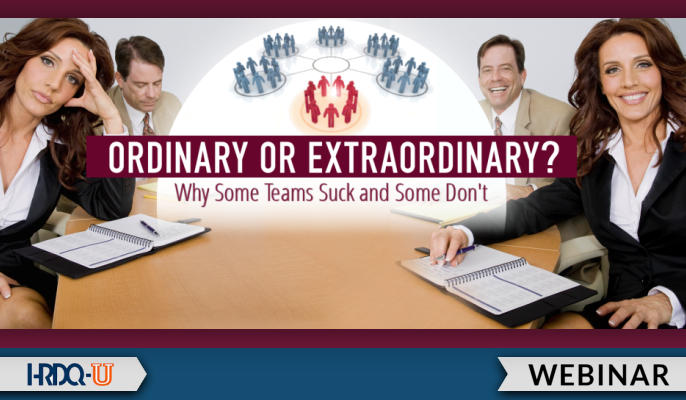
Ever notice how certain team experiences feel exhausting while others enlighten you and help produce the best work of your career? According to a Gallup study, if two-thirds of employees are disengaged, then even the most reliable team might appear moderately uneven and not very memorable. Yet, other team experiences can serve as career high points helping us to remember the reasons why we love where we work, lessons we’ve learned containing positive impacts, and teams we’ve performed with that produced outstanding outcomes. Research using the Extraordinary Teams Inventory (ETI) even exposes the reality that the average group contains roughly 15% of members who suck as employees and 15% who are genuinely extraordinary.
So, what sets extraordinary teams apart from the rest? Join author Kevin Coray and expert practitioners from the Extraordinary Teams Partnership, Sally Stamp and Todd Weinstein, for this practical discussion of what makes extraordinary teams tick. Discover how these experts incorporate the ETI and its research to help their clients make progress toward being extraordinary. Attend this webinar to look through the lens of exceptional teamwork and uncover how to coach your team to their highest potential.
Kevin E. Coray is an industrial and organizational psychologist and master somatic coach. Kevin is a consultant to leaders, teams, and organizations. He is also co-author of the Extraordinary Teams Inventory and the Embodied Leadership Assessment. Kevin brings over 35 years of experience consulting to and coaching executives, teams, and improving organizational performance as the leader of an award-winning, national consulting firm he ran for 27 years
Learn more at cgstrategy.com.
Sally Stamp is a certified coach and consultant who works with individuals, teams, and organizations, primarily in the areas of leadership development, communication effectiveness, culture transformation, and life/work balance. Her experience includes working for a variety of healthcare and technology organizations as both an internal change agent and an external coach and advisor.
Todd Weinstein is a certified executive coach with 20 years of experience as an HR professional, leadership consultant, and strategic business partner. He’s been an advisor, coach, mentor, or facilitator to hundreds of leaders at all levels and with diverse teams. His coaching is based on rigorous training at the world-renowned Hudson Institute of Coaching and is accredited through the International Coaching Federation (ICF).
Training Tools for Developing Great People Skills
This event is sponsored by HRDQ. For 45 years HRDQ has provided research-based, off-the-shelf soft-skills training resources for classroom, virtual, and online training. From assessments and workshops to experiential hands-on games, HRDQ helps organizations improve performance, increase job satisfaction, and more.
Learn more at HRDQstore.com
“Kevin Coray, Sally Stamp, and Todd Weinstein shared critically important content for any organization where teams and teamwork make the difference. I found this webinar provocative, engaging, reassuring, and practical. Using the ETI seems one easy step to help any team to increase its capacity. Thank you, HRDQ!”
—Kathleen R.
“This was an informative and well-organized webinar. The three presenters worked well together and gave different perspectives. Thank you!”
—Shary T.
“This was a great webinar. I loved the way the presenters not only talked about how extraordinary teams work, but demonstrated it in the way they worked together!”
—Malcolm W.

Sign up for more as a member of HRDQ-U
HRDQ-U offers much of its learning content free to visitors, including live and select webinars, blog posts, and more, with new events and posts shared every week. However, there is much more learning available. You can access our complete library of on-demand webinars and other training events and content by simply signing up.